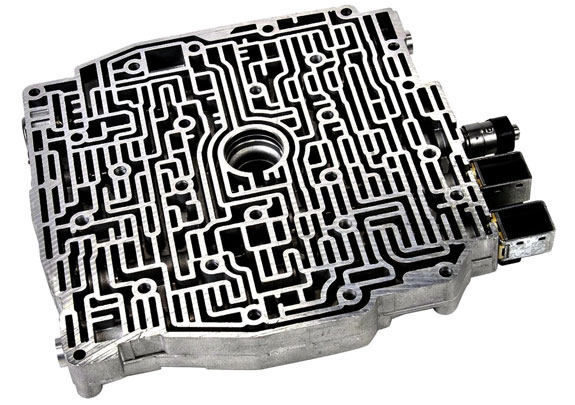
In this article we are going to see the signs of transmission problems in cars. In other words, when your car shows these signs, then you know there’s a transmission problem. Most car owners are oblivious of the workload their vehicle tackles every single day and what the vehicles go through to perform these basic tasks seamlessly. Just like the brain to a human body, the transmission is one of the components of a vehicle that channels the power produced by the engine to spin the wheels. A transmission not only rotates or turns the wheel, but a vehicle cannot move in the absence of transmission.
The transmission just like other components of a vehicle requires constant maintenance. Early detection will not only save cost but also prevents impending accidents and extra damages that might occur in the vehicle. As a car owner, bear in mind that some major components of the vehicle such as the transmission wear out, and just like the human body, vehicles also need to be looked after.
Most times, spotting these problems is not that easy, but it is imperative to look out for these signs of a possible transmission failure.
Read also: Toyota Corolla Problems and How to Get It Fixed
Signs Of A Bad Transmission
A transmission failure can endanger the life of a driver and any other occupant of the vehicle. When a transmission fails, it affects the control and performance of a vehicle till the point where the vehicle finds it difficult to move. This means that the transmission needs immediate attention before it deteriorates further.
Below are noticeable signs that can give you hints when the transmission needs service.
1. Noisy Or Grinding Sound
An abrasive mechanical grinding of metals and squealing sounds when you shift the gear of your car is one of the things that should give a car owner hints of a possible transmission problem. It mostly occurs when the transmission fluid’s level is low and it can be detected in both a manual and automatic transmission. In an automatic transmission, it’s usually a whirring sound while in a manual transmission, it comes off more like a harsh clunking sound.
Whichever one it is, it’s more than just an obstacle because it leads to an inevitable transmission failure. Meanwhile, the cause could also be from a fluid that does not work well with the transmission or the teeth of the gear needs an immediate replacement.
2. Burning Smell
A burning smell in a vehicle can be an indication of overheating in the transmission. it can also mean the fluid is either old, burning, or leaking. Lubricating the gears with transmission fluids are meant to make it turn smoothly but it can as well burn the transmission if it’s getting worn out or the vehicle’s mileage is high.
In the case where the fluid is leaking, inspect the dipstick of the transmission according to the producer’s direction to ascertain the level of the fluid and the condition of the transmission. This helps to prevent further damages.
3. Observe the Engine Light
Vehicle owners tend to ignore engine light alerts when it pops up on the dashboard. A car owner needs to take it seriously all the time and be proactive about it because it might alert you of an imminent problem. In most contemporary vehicles, the engine light indicates on the vehicle’s dashboard when the sensor detects a fault.
These faults are usually not from the engine, so you must contact an expert to diagnose the vehicle with the appropriate tools.
4. When the Fluid is Leaking
A red kind of crystal drop from a vehicle is a sign that all is not well with the fluid level of your transmission. Fluids are mostly meant to lubricate and make the gear-shift easy to steer, but when the heat emitting from a vehicle becomes excessive, it affects the state of the transmission and causes the fluid to lose the needed quality for lubrication and it eventually starts to leak.
Subsequently, when the fluid becomes insufficient and constantly leaking, it affects not only the engine but the transmission as well. It is proper to check the level with a dipstick and top up if it’s low before taking the vehicle for a check and possible re-sealing of the transmission.
5. Fluctuating Gears
Gear levels are majorly inputted by the person driving the vehicle. The driver decides which gear to use at different points when it comes to a manual transmission. In automatic transmissions, the driver also determines when to change from drive to neutral. Or when to slide to park. A fluctuating gear simply means the gear voluntarily slips in and out of gears without being inputted by the driver.
This can be very dangerous especially when the vehicle is in motion. Low fluid or weak transmission band could also be a possible cause. Whatever one it is, an urgent fix is required to avert a possible danger or damage.
Read also: Why Car Door Won’t Open: Causes & Solution
7. When the Gear Delays
When a transmission is actively functioning, it slips into the right gear without delay. If a vehicle’s gear hesitates, it often indicates a possible transmission failure. When it comes to gear delays in a vehicle, it can be a result of different other possible reasons such as low, contaminated, or leaking transmission fluid. These are caused when the car owner lacks a good maintenance culture.
Another plausible reason could be water penetration. As unserious as it sounds, a flooded vehicle or constant driving of a vehicle on water-logged roads can cause the car to overheat; thereby causing a lot of damage to the interior parts of the transmission. However it is, the only way to figure out the actual problem is to run a service check on the car.
8. If the Gear is Unresponsive
Just like every other machine, vehicles also get to that point where they decide they need a break. situations like this come into play when the car refuses to get into gear. issues like this are usually caused by fluids that might affect the gear cables or it could be the car’s computer system. Another possible reason could be because the transmission fluid is not adequate and it requires a top-up. But for clarity, get an expert to check it out to get the vehicle back to normal.
9. Dull Performance
It gets to a point where a vehicle starts performing retrogression. More often than not, car owners tend to pin this problem to the car’s engine. However, a transmission problem or a needed change of spark plug can cause a vehicle to perform sluggishly by unusually hesitating when firing the accelerator.
10. Vibrating When You Switch The Gear
If a vehicle shakes when the gear is changed, the transmission may have a problem. Although, this particular sign is peculiar in automatic transmissions timely checks can aid in detecting the actual problem for possible solutions. In manual transmissions, possible clutch drag might be experienced making it impossible to change the gear or cause it to slip out.
However, you experience it, jerking or Shaking while engaging a gear is a sign that all is not well with the transmission. It is also advisable you hire the services of an expert to run the checks and fix the problem on time.
- Car Surge
This is dependent on the brand and model of a vehicle, but it’s also one of the possible signs to look out for in indicating a transmission failure. When a vehicle is in motion, it can suddenly charge forward on its own without the driver applying pressure on the accelerator. This can be caused by contaminated fluid. In this scenario, the dirty fluid needs to be evacuated and you might want to consider changing the transmission filter to avoid uncertainties or further damages.
Key Note
Many issues of transmission failures start from a small stage. Ignoring signs like the ones listed above can land you in more expensive repairs. A rundown of the signs shows what a vehicle owner is expected to look out for in a vehicle for possible transmission failure, and they are things that are easy to indicate. It only takes the meticulous attitude of the car owner in detecting when these signs spring up.
Conclusion
Even experts tend to find it difficult in tracing problems of cars. But regardless of whatever the case might be, it’s ideal to study one’s vehicle carefully to know when something unusual creeps up. Being proactive is one of the safest ways in taking care of your car. Therefore, endeavor to visit a professional mechanic instead of ignoring the signs till it becomes a much bigger problem and expense.
In terms of transmission, it is one of the key components of a vehicle and as such, a vehicle owner should treat it with importance to avoid a possible vehicle breakdown. It will not be wise for a vehicle to break down with transmission failure before you will start looking for a solution on how to fix it. Just an indication that the gear of your vehicle is working abnormally should be a sufficient reason to drive down to a repair shop to figure out what the problem could be except maybe you prefer being taught the real meaning of failure on the road in the middle of nowhere.









